75+ Sample Team Charters
-

Management Team Charter Template
download now -

Scrum Team Charter Template
download now -
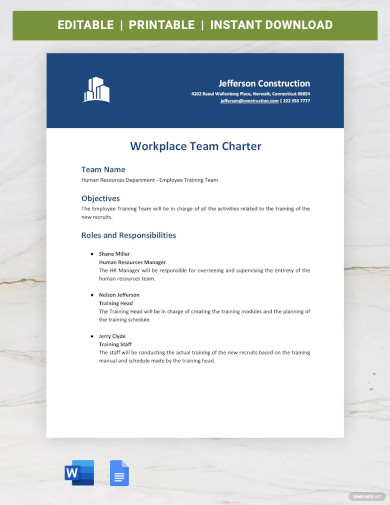
Workplace Team Charter Template
download now -

Product Team Charter Template
download now -

Leadership Team Charter Template
download now -

Innovation Team Charter Template
download now -

Work Team Charter Template
download now -

Executive Team Charter Template
download now -

Healthcare Team Charter Template
download now -
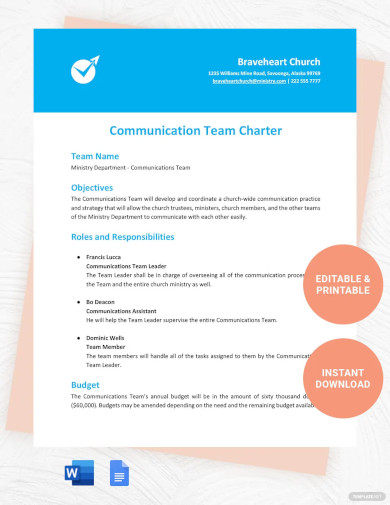
Communication Team Charter Template
download now -

Training Team Charter Template
download now -

Organizational Team Charter Template
download now -
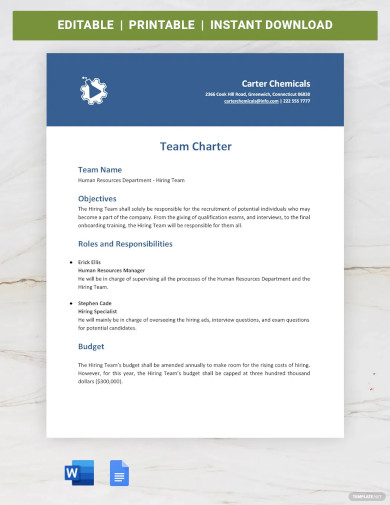
Business Team Charter Template
download now -

Project Team Charter Template
download now -
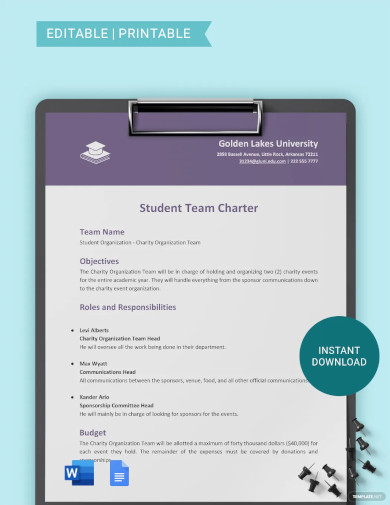
Student Team Charter Template
download now -

Free Team Charter Agreement Template
download now -

Integrated Test Team Charter Template
download now -

Integrated Project Team Charter Template
download now -

Free Basic Team Charter Template
download now -

Enterprise Architecture Team Charter
download now -

Process Improvement Team Charter Template
download now -

Performance Improvement Team Charter Template
download now -

Continuous Improvement Team Charter Template
download now -

Free One Page Team Charter Template
download now -

Free Agile Team Charter Template
download now -

Visual Group Assignments Team Charter
download now -
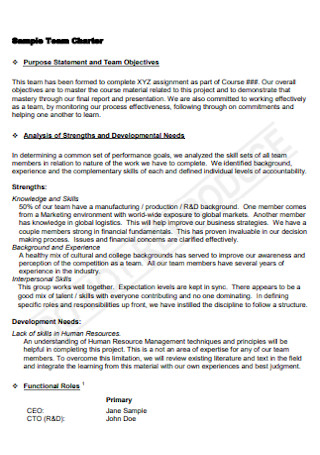
Sample Business Team Charter
download now -

Project Canvas Team Charter
download now -

Simple Meeting Team Charter
download now -

Boundary Conflict Resolution Team Charter
download now -

Team Engineering Work Charter
download now -

Ground Rules Team Charter Agreement
download now -

Team Charter Process Improvement
download now -

Team Charter Grading Rubric
download now -

Design Vision Team Charter
download now -

Management Organizational Team Charter
download now -

Individual Signature Charter Team
download now -

Executive Leadership Mission Team Charter
download now -

Compliance Learning Team Charter
download now -

Team Charter Behaviour and Contract
download now -

Policy Fun Team Charter
download now -

Communication Team Charter
download now -

Team Charter for Name
download now -

Fusion Team Charter
download now -
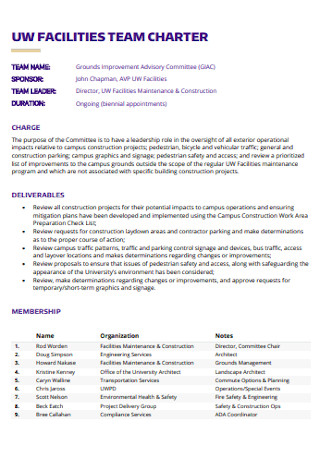
Facilities Team Charter
download now -

Basic Team Charter
download now -

Components of the Team Charter
download now -

Technical Review Team Charter
download now -

Leadership Team Charter Template
download now -

Volunteer Team Charter
download now -

Communications Action Team Charter
download now -

Integrated Project Team Charter
download now -

Formal Team Member
download now -

Infrastructure Operations Team Charter
download now -

Project Team Charter Template
download now -

Sample Team Charter Example
download now -

Volunteer Recognition Team Charter
download now -

Team Building Charter
download now -

Standard Team Charter
download now -

Cyber Planning Team Charter
download now -

Outside Parties Team Charter
download now -

Sample Analysis Team Charter
download now -
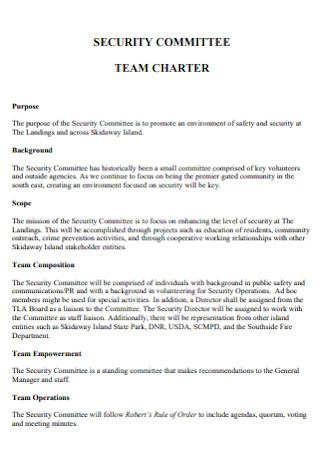
Security Committee Team Charter
download now -

Research Team Charter
download now -

Student Leadership Development Team Charter
download now -

Project Implementation Team Charter
download now -

Equity Allies Team Charter
download now -

Administratvie Team Charter
download now -
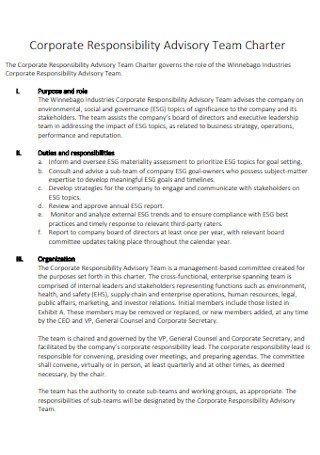
Corporate Responsibility Advisory Team Charter
download now -

Outreach Team Charter
download now -

Printable Team Charter
download now -

Service Team Charter
download now -

School Team Charter
download now -

College Team Charter
download now -

Project Team Charter Checklist
download now -

Disease Team Charter
download now
What Is a Team Charter?
It is a document that states and defines the resolute definition of the goal statement, desired output and target audience. Included as well are the different roles and responsibilities of each member of the group. This is a useful instrument in order for the task to be accomplished easier and faster. This will lay out the foundations in order for the overall success of the team.
Key Elements Included in the Team Charter
Step by Step Process in Creating a Team Charter
Step 1: Brainstorming
The first step in creating this document is identifying the key elements. It is very important that all the key elements are thought of meticulously. A helpful strategy in knowing and expanding the different details is by the use of mind maps. With this you can start with the main purpose in the middle then carefully and exhaustively expand the idea to identify every minute detail that will complete the document. You can make use of one mind map for each element. This will enable you to have a better understanding of what is needed. In order to come up with an in-depth team charter all the key elements should be carefully reviewed and evaluated.
Step 2: Integrating
After the brainstorming, if all the details are identified then start grouping them up and allocate them to their respective sections in the key elements. Remember to carefully analyze where each detail will be put under.
Step 3: Elaborating
After classifying the details, explain it as clear as you can and as brief as you can. A team charter should be easy to understand but at the same time contain all the necessary pieces of information.
Step 4: Reviewing and Evaluating
Go over the document as frequently as needed in order to make sure that the status and progress of the project is going well.This is also to make sure that you are on track and the tasks are still in line with the end goal.
Make use of the templates available above in order to have an outline and a helpful guide in creating an effective and detailed team charter.
The Benefits of Having a Team Charter
Buy-in
Some staff and employees are intimidated and afraid of changes. This is especially true if there are no clear details on what the goal is and how to accomplish the said goals. Trying out new things is scary. But, with the help of team charter, whether it is a current or new employee, they will have an idea of what to do and how to do it. This will make sure that you will be able to recruit team members and have your hands on the necessary resources that are available and needed.
Accountability
In case that there are unexpected and unfavourable circumstances in a team and the project, the team charter will clearly define who will be responsible for whatever that will come next. This is to make sure that there is accountability for everyone on the team.
Roles and Responsibility
This will define the daily operations in the project. Without proper instructions and directions, team members may lose their focus and their way while working. This will make sure that there is a clear and specific task for each member. It clarifies the scope of work of each team member.
Purpose of the Team
This will state and define the main purpose as to why the team was created. This will help in avoiding confusion and make sure that everyone will see the worth of the team.
Clarity
By identifying and clarifying each key element included in the team charter, it will help in getting the team together through tough times. It will clarify what is needed to do incase of problems. It can be of help also in risk management plan.
What are the usual phases in the development of a team?
According to Tuckman, B.W. & Jensen, M.A.C., there are 5 typical phases in developing a team. This was based on a research study called Stages of Small Group Development Revisited.
Step 1: Forming – This is also called the initial period. This is the phase where the team members are still on the get to know each other phase.
Step 2: Storming – This is also called the sorting out period. This is the phase where the team members are giving their opinions about the subject matter. These opinions may be about the task as well as the team leader’s authority will be questioned.
Step 3: Norming – This is the step where team members will focus on laying out the foundations in terms of procedure in order to achieve the set of goals. This is the part where everyone will start working as one.
Step 4: Performing – This will be the step in where the team will start executing the established plans. This is also the section where the team members are allocated in each department. They will also be performing the roles and responsibilities assigned to them.
Step 5: Dissolving or reevaluation – This is the part where the team will be dissolved due to the completion of the project. Sometimes this part will also be a step where the team will be evaluated in order to move on to other projects.
What are the 5R’s framework in the program cycle?
The 5R’s stands for results, roles, responsibilities, relationships and rules.
Results – This is the first part in the framework of the program cycle. This will identify what the expected or desired outcomes, products as well as service of the team. This will also define how it is essential in achieving the business goals.
Roles – The next part would be identifying the different roles of the team members. This will be clearly stated and explained to the employees about their respective part or function in the team.
Responsibilities – After identifying what function will be performed by each individual, it is needed to move on to the identification of the work. Each team member will then be assigned and allocated to their specific responsibilities. It will also state the desired work that they need to perform and accomplish.
Relationships – The next part would be identifying the different relationships. This will state and define what the connection is between the team members. How will they communicate with one another? Also, to whom will they get and provide the necessary resources? Included also in this section is the external communication with the sponsors and stakeholders. Regular updates on the status and progress of the project should be conveyed to the stakeholders.
Rules – This part is similar to policy and procedure. This will define the set of rules that are to be implemented. Every member should abide by the rules at all times when it is working hours and within the boundaries of the workplace. This will lay out what the appropriate behaviors are in the company.
There is no doubt that a group with one goal and direction in mind will be more effective and faster in achieving the target goal. A team charter is a document that will guide the team members in knowing what the goal is and understanding the plan of action in achieving those goals. Make sure that a team charter is available and accessible to every member of the project team. Try out the templates available above in order to be efficient in creating an in-depth team charter.